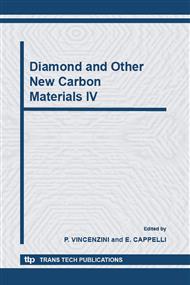p.103
p.113
p.119
p.127
p.133
p.142
p.151
p.161
p.169
Normally Closed Microgrippers Based on Diamond Like Carbon Structures
Abstract:
Highly compressively stressed diamond-like carbon and polymer films were used to fabricate normally closed microgrippers with diameters as small as 30~40μm. The microgrippers consisted of a DLC layer of 30-50nm, a thin Al layer of 40nm as a heater and an SU8 layer of 250~500nm, and were fabricated by a self-aligned two-mask process. Electrical tests and nonelectrical tests on a Peltier device confirmed the devices have an operation temperature of ~100°C for an opening angle of 90°, much lower than the ~400°C needed for previously fabricated Ni/DLC microgrippers. This value is consistent with finite element modelling and analytical calculation. The power needed to open the microgripper was only ~10 mW, less than half of those used for the previous Ni/DLC microgrippers. It has been successfully demonstrated that the microgrippers can be used to capture and confine micro-objects using microbeads for the tests.
Info:
Periodical:
Pages:
133-141
Citation:
Online since:
October 2006
Authors:
Price:
Сopyright:
© 2006 Trans Tech Publications Ltd. All Rights Reserved
Share:
Citation:


